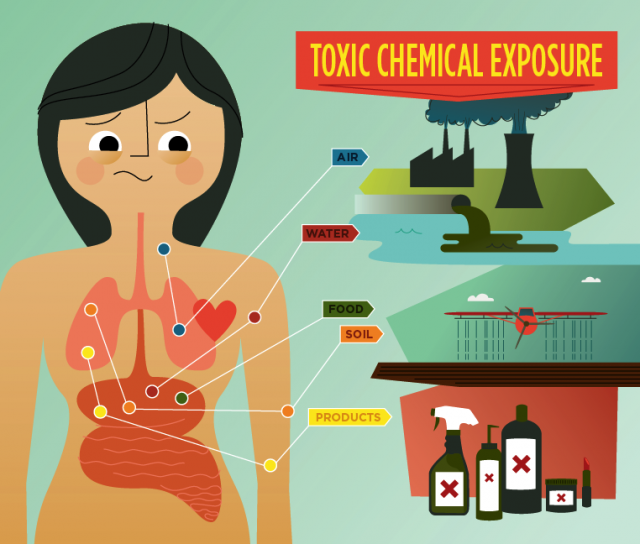Did you know that your stress levels and hidden chemical-laden skincare products may actually be behind your stubborn weight gain to a myriad of other symptoms?
Here, I share informative hormone health tips that I discuss on the Awaken Beauty Podcast.
We explore what happens as a consequence to our inner and outer ecosystem and daily actions that may be putting us at risk when we have “too much” or an imbalance of Estrogen.
Estrogen is what gives us women our beautiful hips, breast and thighs and keeps our entire body well lubricated. Estrogen also increases the health of our bones, plump skin, mood and much more.
Feeling it?
Irregular or heavy periods
Water retention
Acne Breast swelling and tenderness
Headaches
Fibrocystic breast changes
Weight gain
Mood swings
Hair loss
Today we review exactly how your estrogen gets out of balance and the critical key actions you can take to become aware and detoxify them!
Listen to the show below (scroll down to watch on Youtube)
How Does Your Estrogen Get Out of Balance?
Based on endocrine research, an imbalance happens in two primary ways.
1. Inability to metabolize hormones.
Not being able to rid our body of excess estrogen is becoming more common and is caused by a myriad of factors including genetics, stress, diet and lifestyle.
These may all contribute to an excess of hormones in the body and known as endogenous (internal).
The leading biomarker to test is if you have a optimal biological function to detoxify efficiently on a daily basis. There are tests to learn more about your personal ability to methylate and what specific detoxification pathways your body engages — good or not so good.
If left unchecked, a long term circulation of hormones can lead to an excess of certain hormones, particularly estrogen, in the body tissue.
2. Exposure to excess hormones in our outer environment.
Exposure to exogenous (external hormones) or hormone like substances can make a woman go crazy - and it’s the consequence of modern day living exposure to hormone like substances on a daily basis.
It’s these excess hormones that are obtained from a coined word knows as “xenoestrogens” that may directly contribute to unhealthy weight gain and other health deficiencies.
How’s this happen? Glad you asked!
WHAT ARE XENOESTROGENS?
Xenoestrogens are a group of endocrine-disrupting chemicals that mimic our body’s natural hormone, estrogen. Normally our endocrine system releases an appropriate amount of each hormone for the body to function optimally. When’s the last time you’ve felt fully balanced?
This disruption happens because these chemicals bind to or block our natural hormone receptors.
So these xenoestrogens, in particular, get in the way of our estrogen receptors. This keeps our natural estrogen from binding as it normally would.
This leads to higher levels of circulating estrogen free flowing in our bloodstream, known as estrogen dominance
So in a nutshell, the more xenoestrogens we’re exposed to, the more total estrogen we’ll have in our bodies.
Mimicking estrogens effect on weight gain in a couple ways:
First, Endocrine Disrupting Chemicals target signaling proteins to make more fat cells which can promote weight gain.
Next, this can further change the energetic balance and the metabolism of ghrelin and leptin, the chemicals which control hunger and satiety. Errored thinking and a double minded confusion then leads to overeating.
Endocrine Disruptors and Estrogen Dominance
Unfortunately our environment is so filled with these chemicals (both inside and outside our home), our bodies are constantly inundated with and exposed to them.
Signs of this estrogenic excess weight are usually found around the abdomen, thighs, breast and the back of the arms.
Instigating the situation even more, excess estrogen processes an enzyme called aromatase, which converts our adrenal steroids (hormones) into estrogen. MORE ESTROGEN!
See the cycle?
It’s a cruel twist of biological fate, that estrogen prompts the formation of more fat cells, and the cycle just perpetuates itself.
EXCESS WEIGHT = EXCESS ESTROGEN = MORE FAT STORAGE
How about he role of stress?
Cortisol is the primary stress hormone produced by the adrenal gland and can easily sabotage weight loss. This is a basic biological function intended to protect us from starvation. When we experience high levels of stress, we produce high levels of cortisol, and our bodies store fat, sort of like an emergency backup plan.
So if you’re leading a high stress lifestyle, and wondering why you can shed those pesky pounds despite your best efforts, finding a way to de-stress is a must.
Feeling stressed? You can address overwhelm in a matter of seconds. I trust you’ll love the 7-11 breathwork exercise.
Exercice: Take a moment and close your eyes closed and put your hand on your stomach. As you take it deep breath in for seven and release for a count of 11, allow your stomach to gently push your hand out and in until you’ve changed your state into a calm, clear, clean, quiet, powerful and peaceful mind.
Now that we are clear and calm, let’s go in depth and create a plan on how to improve detoxification for overall wellness and weight management.
5 Steps to Balancing Your Estrogen Naturally
Love Your Liver. Your liver is responsible for metabolizing and releasing estrogen out of the body.
Nutrient density – Eat quality protein
– Eat plenty of garlic and onions
– Take a B complex
– Eat a minimum of 3 cups of cruciferous vegetables weekly
Fix Your Gut.
Once the liver processes estrogen for elimination, it is up to your gut to move it out! If you are experiencing constipation, there is a good chance your estrogen isn't making its way out, but instead, going back into circulation in the body. Figuring out and treating the underlying cause of your digestive issues is crucial in creating optimal hormonal health.
Eat Fiber. Aim for at least 25 grams per day by eating plenty of vegetables and fruits. Fiber will keep your bowels regular and help eliminate waste, including unnecessary estrogen.
Stress Less.
Sleep! Seven hours is the minimum you should be getting nightly. Your body needs sleep and your hormones demand it.
Remove Products Containing Endocrine Disruptors
Front and center, as a formulator, I can see first hand how estrogen mimicking chemicals are traditionally found in personal care products. As I started formulating over 12 years ago- I made sure none of my skin and hair products were free of hormonal disruptors.
I’ll go deeper into Xenoestrogens in beauty products on a upcoming episode, but for today’s purposes, I want to leave you with a overview of the top 3 offenders you can address immediately.
Ready to take action?
The importance here is to bring awareness to our inner and outer everyday trance of “normalcy” by assessment because I want to make sure that you're informed and you know how to support your hormones in every way possible.
So let’s jump into the power of removing these top three!
3 Most Common Endocrine Disruptors and How to Find Them
1. Bisphenol A (BPA)
BPA is a chemical that has been associated with cancer, including breast cancer. But beware! The chemicals they use to replace BPA are equally concerning in regards to the negative health effects like sabotaging your fertility, causing your weight to climb, and painful periods.
BPA is Commonly Found In:
Receipts
Plastic bottles and containers
Canned foods
Food packaging
2. Flame Retardants
Your rest it at night may be in conflict with your hormones!
The tricky thing about flame retardants is that they aren’t just in our couch cushions or mattresses. They are also in our pets beds, find their way into the dust in our home, are in baby car seats, electronics, and on kid’s pajamas.
Flame Retardants Are Commonly Found In:
Mattress
Furniture
Pet beds
Children’s Car Seats
How to Avoid Flame Retardants:
Check the labels on clothes and don’t even touch those synthetic pajamas in the store.
Check the labels on furniture before you make a new purchase
Purchase flame retardant free mattress
Choose pet beds without flame retardant
Use a HEPA or other air filter in your home
3. Phthalates
Ever wonder why you hear avoid fragrance when it comes to hormones? That’s because fragrances can be a source of phthalates, which are known to cause harm to reproductive health.
Phthalates Are Commonly Found In:
Personal care products
Plastic wrap and food storage containers
Plastic children’s toys
Fragrances in trash bags, diapers, and candles
Air fresheners
How to Avoid Phthalates:
Read labels and avoid products that list phthalates or fragrance
Eat out of glass, rather than plastic storage containers
Ditch air fresheners and opt for essential oils instead
Buy natural, beeswax candles only (or at minimum fragrance free)
Use laundry detergent that doesn’t have artificial fragrance
Eating organic foods as often as possible
Avoiding Xenoestrogens (like personal care products or cleaning products that can disrupt our hormones)
Avoiding further exposure by not eating out of plastic containers and not touching the paper receipts from the grocery store.
Make sure you're getting a variety of fiber-rich foods that can help you carry waste out. And, at the same time, those foods are supporting your overall hormonal system, your nutrient health, and your liver detoxification.
You can also support detoxification and elimination of chemicals that harm your hormones by supplementing with:
Diindolylmethane (DIM)
Broccoli seed extract
Resveratrol
Chrysin
Calcium D-Glucarate
Folate
Magnesium
Well ladies, that’s it! I get pretty heated up around hormone disrupting invaders in our life.
Stay tuned to a story shared with Julie Tebben on Episode 11 and how it directly relates to the importance of our beauty and personal care products we use as women, every day.
Here’s a few facts to preface my next mini episode on Xenoestrogens and products.
The average US woman uses 12 personal care products a day, containing 168 different chemicals
While most men use fewer products, they’re still exposed to about 85 such chemicals daily
Women with higher levels of personal-care chemicals in their bodies experienced menopause two to four years earlier than women with lower levels
Ok, Enough for now. I hope you enjoyed this savvy info.
Watch on Youtube!
You can listen to the episode here.
Please like, subscribe if you’re not already part of our tribe and comment what you learned with your 5 star review!
Looking for natural, organic and hormone disruption free skin and body care? Then you know where to go! Head to Evoqbeauty.com and enter “AWAKEN” for 25% your very first order!
Resources:
Dr Jolene Brighten
Thttps://www.energeticnutrition.com
https://www.shechangeseverything.com/blog/2018/11/4/are-chemicals-making-you-sick-the-full-list-of-obesogens



 All the potential risks associated with chemicals in cosmetics make natural deodorants a lot more appealing.....
All the potential risks associated with chemicals in cosmetics make natural deodorants a lot more appealing.....



